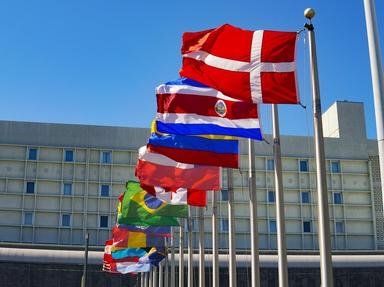Quiz Answer Key and Fun Facts
1. When Heralds first began appearing in around the 12th century, their original and primary duty was what exactly?
2. True heraldry has been defined as "The systematic use of hereditary devices centered on the shield". The earliest known decorated shield that satisfies this definition was presented to Geoffrey of Anjou in 1127 when he was knighted by whom?
3. Simple coloured bands adorning the face of a shield are known as what?
4. The undifferenced Arms of the Scottish family 'Menzies' consists of a simple shield coloured silver with a thick red band across the top. How would a Herald describe these Arms using the correct terminology?
5. On some Arms, toward the top edge of the shield, we see the form of a riband with three ribands pendant in silver. What is the correct name given to this addition?
6. The colours, or tinctures used in heraldry consist of two metals and seven colours only. What colours are represented in the following list?
Argent, Azure, Vert, Gules
7. What is the correct name given to the process of decorating a shield?
8. What is the name given to the upper edge and the area immediately below this edge on the shield?
9. When an individual is granted armorial bearings, the right to bear these arms is granted through which document?
10. A narrow border inset from the edge of the shield is known as what?
11. A lion depicted on a shield, standing on all four legs, looking backwards over its shoulder might be described in heraldic language as being?
12. The Most Noble Order of the Garter, which is Great Britain's premier Order of Chivalry, was founded by which English King in 1348?
13. The Arms of which nations are emblazoned on the Arms of the Dominion of Canada?
14. Which creature occupies the pre-eminent position among animals used in Heraldry?
15. The English translation of The Royal Motto reads 'God And My Right'. How does this Motto appear on the Royal Arms?
Source: Author
SisterSeagull
This quiz was reviewed by FunTrivia editor
stedman before going online.
Any errors found in FunTrivia content are routinely corrected through our feedback system.

